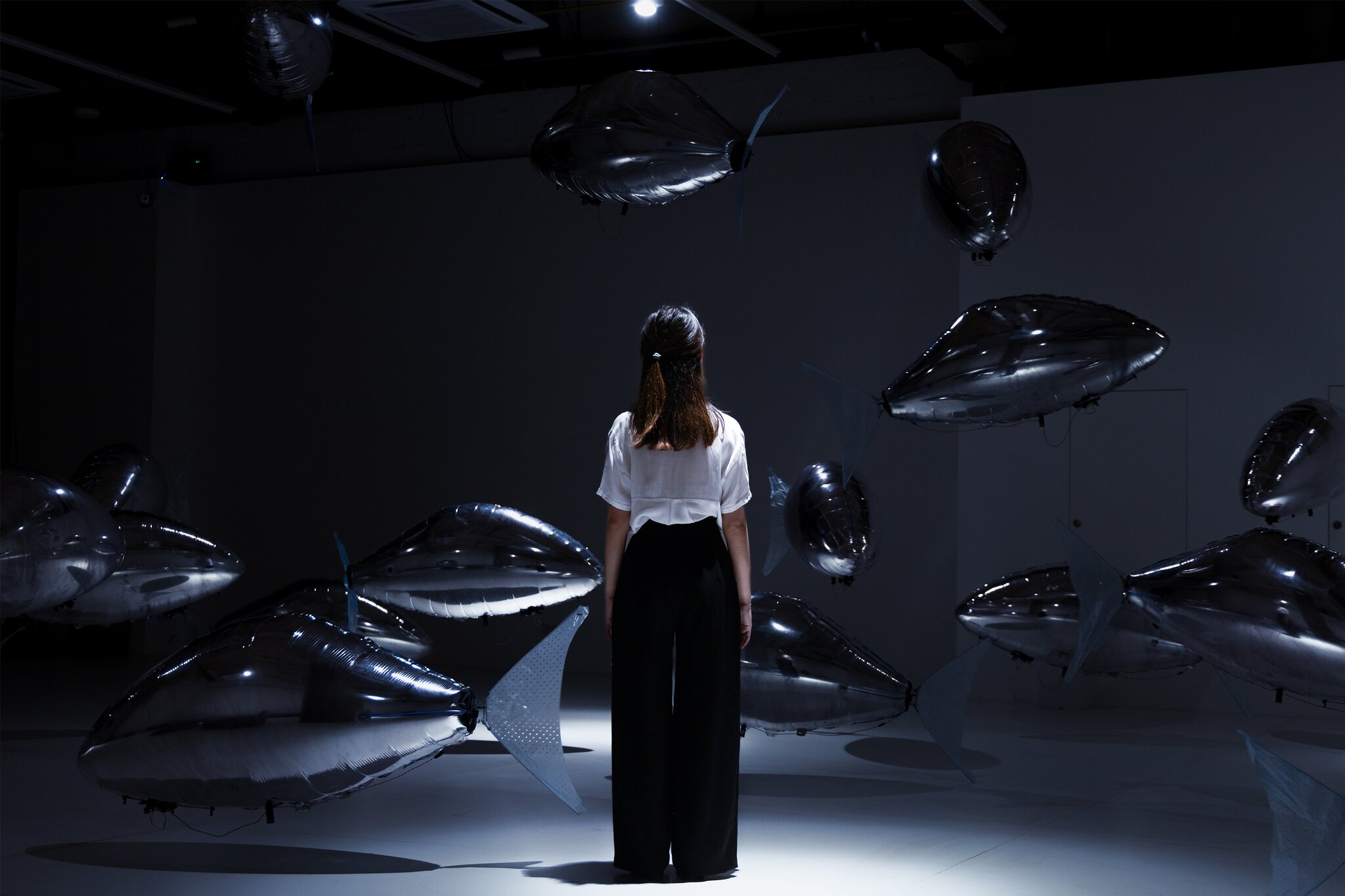Hope is not a substitute for action. Rather, it is a basis for action that we consciously choose – in the midst of cynicism, ignorance and indifference. An invitation to feel, to act, to touch and to be touched.
The themed exhibition, which can be experienced by young and old during the five days of the Ars Electronica Festival 2024, turns out to be a journey in two dimensions. On the one hand as an actual journey into the underground labyrinth of the POSTCITY concrete bunker, whose architecture provides an impressive setting for 24 art projects, and on the other as a metaphorical journey into a world of hope. Or rather: into an environment that awakens and cultivates hope and invites its audience to take active action. The extended exploration is divided into a prologue in the opening area of the festival, followed by three chapters that follow the twists and turns of the underground architecture, and ends with an epilogue just before the audience returns from the depths of POSTCITY. Back to reality. Full of hope and new ideas. Full of the urge to be a part of the change. Full of confidence.
But where does this sudden change of heart come from? What activates the hope in us? Who is able to show us new possibilities in times of uncertainty? We already know everything. Don’t we?
During the exhibition “HOPE: the touch of many”, the audience will follow the question of which collaborative approaches can lead – or are already leading – to compassionate and sustainable changes in our society. By experiencing first-hand a variety of projects from different artistic explorations and fields of research, the audience will become aware of the true “superpower” of artists – to inspire hope and eliminate indifference. They activate our imagination, trigger emotions and thus affect our entire sensory body. They tell us stories. And yes, we find new answers in them. Or as Ursula Le Guin says: “The story is one of the basic tools that the human mind has invented to gain understanding.”
One art project that visitors will encounter in the Welcome Area, for example, is La Machine a Tubes. A project dedicated to our entertainment culture. So even before you venture into the depths of POSTCITY, the motto is: Participation is welcome!
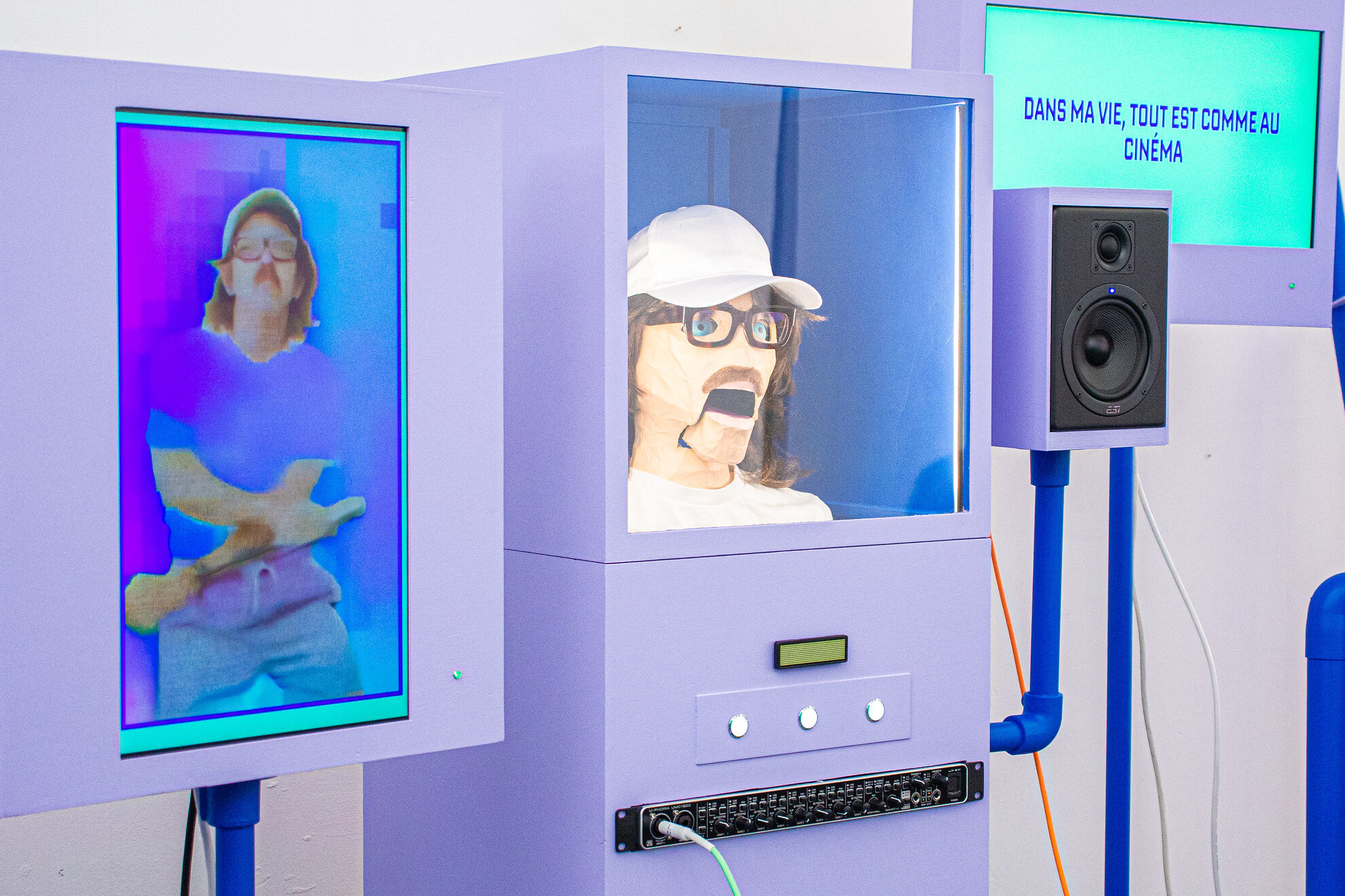
Suspected of being a hit?
Bastien Bron, aka My name is Fuzzy, explores the fantasies and limits of artificial intelligence with La Machine a Tubes: instead of questioning whether AI will save or destroy humanity, he prefers to test its ability to entertain us.
Although the movie is called “The Hit Machine”, there is no guarantee that it will produce a single hit. Relentlessly, the machine tries an infinite number of combinations of notes and lyrics without knowing whether it will succeed. Fed by melodies and themes that the artist has come up with – but are now being used by the AI, it tries to create new content. The audience is invited to interact with the machine and make decisions so that new songs are constantly played live by the artist’s digital self. The work takes an ironic look at the algorithms that influence our tastes and desires.
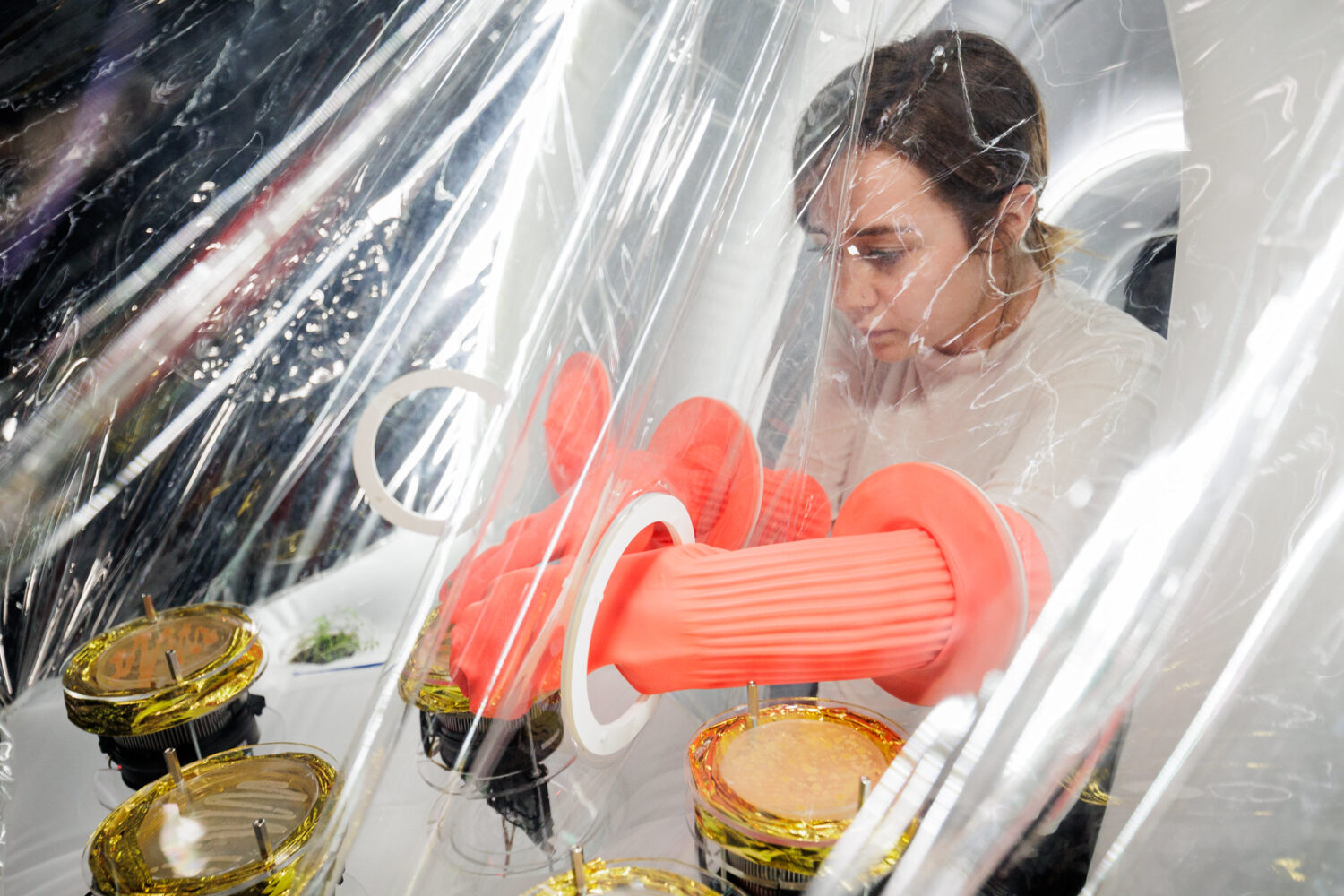
Hope vs. indifference
It seems that being an artist has never been more challenging and exciting than it is today. They create visions of the future and speculate on how fictional societies could develop. They create utopias and show how we could shape our lives. Whether painting, music, literature, film or animation, performance or installation – artists empower us to recognize radical possibilities, to get involved and to develop – for a collective transformation in our real everyday worlds.
Artist Spotlights
The focus of the themed exhibition is on the Artist Spotlights. In four selected rooms, visitors are invited to look through the eyes of artists Tega Brain, Anab Jain from Superflux, LaJuné McMillian and the Time’s Up collective. What awaits them there? They will be taken to the intersection of ways of thinking, ways of working and ways of being together. Another chance to finally feel, hope and act – and to understand. Because the main aim here is to better understand connections. The Artist Spotlights invite us to rethink artistic research. Artists enable us to reconceptualize knowledge so that we can also overcome the ecological and social problems that we feel.

Thinking outside the box: in three chapters
As the audience moves through the labyrinth, all the artists challenge both the sensory and emotional capacities of their visitors. The entire themed exhibition strives to transcend the pure aesthetics of viewing and listening. It aims to promote compassion and mindful coexistence. And by transforming the uncertainty of the future into a sense of connection, artists bring us into feeling, hope and action. By reaching people’s senses through their tangible worlds as well as through their constructed utopias in a way that scientific arguments alone obviously cannot penetrate – as the urgency of climate change shows us.
It is therefore a matter of getting involved, of thinking beyond the boundaries of the existing, of embracing the unusual. To do this, however, we must first highlight what should be in our field of vision and then activate it. The exhibition uses various strategies and methods to show us how to expand our senses.
Divided into three thematic chapters, Entanglements of Knowing, Sensing Environments and Ecologies of Action, the exhibition presents art projects that sow courage and new awareness. They give us an insight into the interdependencies between humans, plants, politics and power, question when and why we are out of balance, and make it clear that we are part of a larger ecology – not separate from nature.

Chapter 1: Entanglements of Knowing
Visitors can experience what this means in concrete terms, for example, through the installation AI and the Art of Historical Reinterpretation – an art project from the first chapter: Entanglements of Knowing.
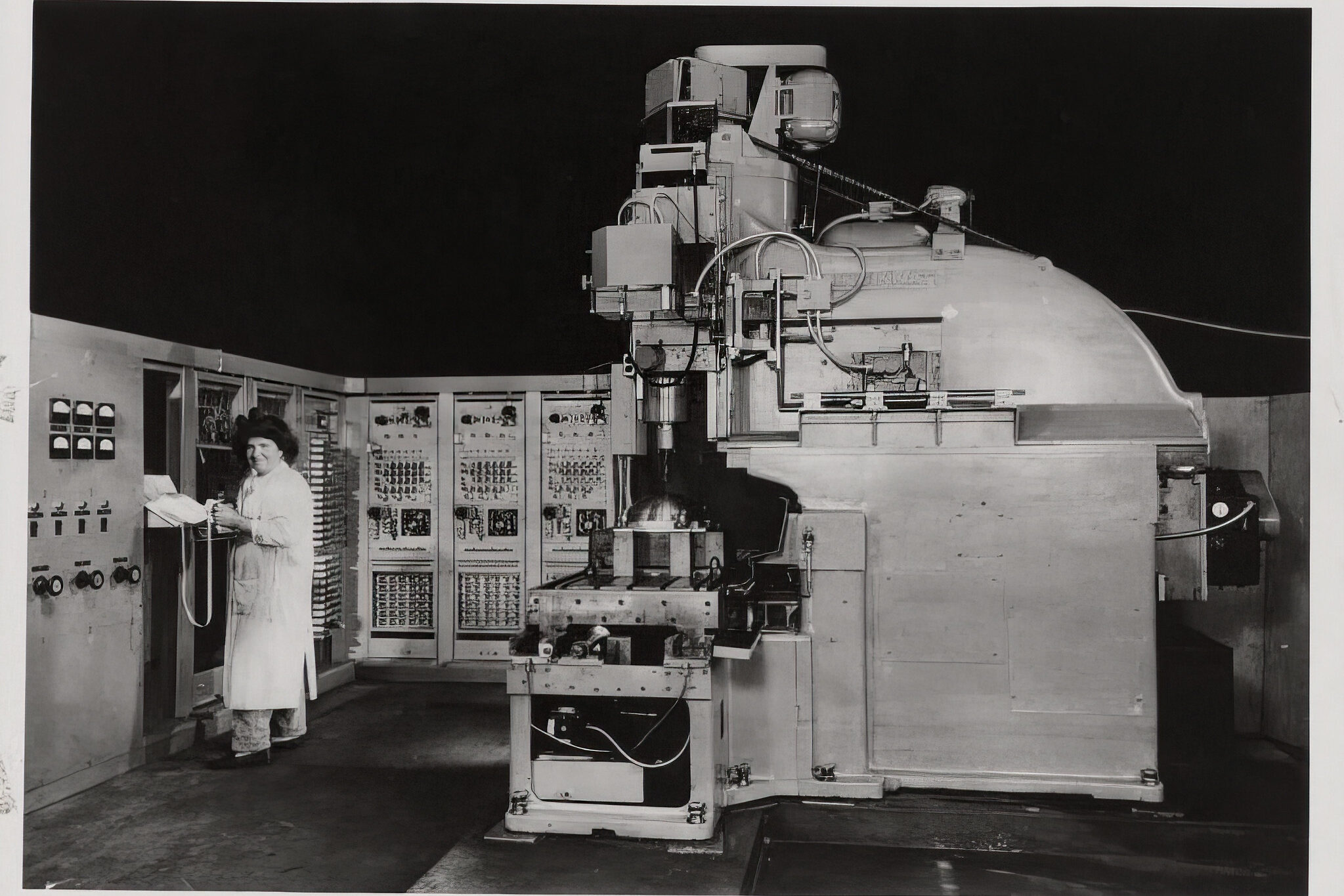
An attempt at an inclusive story.
The installation criticizes the distortion of historiography, which is guided by political interests and shaped by personal preferences, one-sided narratives or the marginalization of events. In particular, the focus is on FLINTA* people, i.e. gender identities that are patriarchally discriminated against, whose contributions to history have been and are often overlooked.
AI technologies, especially image generation models, can rewrite history, improve our understanding of the past and close gaps that exist, especially in gender relations. By creating a growing fictional image archive in a cultural, socio-political and scientific context, the project reinterprets the past in a new and inclusive way. In this way, AI models will be trained to ensure a balanced perspective. This collection will be distributed via digital platforms, fostering a deeper understanding of history as well as the implications for future AI decisions. To create the feeling of a historical image archive, a slide projector and old projection screen will be used to present the selected images.
Two Artist Spotlights projects can also be found in the first chapter of the exhibition. On the one hand: the project by the collective Time’s Up: Just asking for a friend. It poses the question that the title of the themed exhibition may already raise in some people’s minds. Namely: How can we dare to maintain hopeful visions in times like these? And this much can already be revealed: The public can look forward to exciting answers here, even if they contradict what we all think we know.
On the other hand: the art project by Tega Brain, which aims to point out that each of us plays a role in the climate crisis. Here, the audience experiences art that experiments with the redesign of the system and cultivates imaginary worlds for climate protection and climate adaptation.
Chapter 2: Sensing Environments
The second chapter of the exhibition is dedicated to the conscious perception of our surroundings. Such as the Cascade art project, which impressively reminds the public of the crucial importance of preserving the often invisible elements of nature – through a multi-sensory experience.
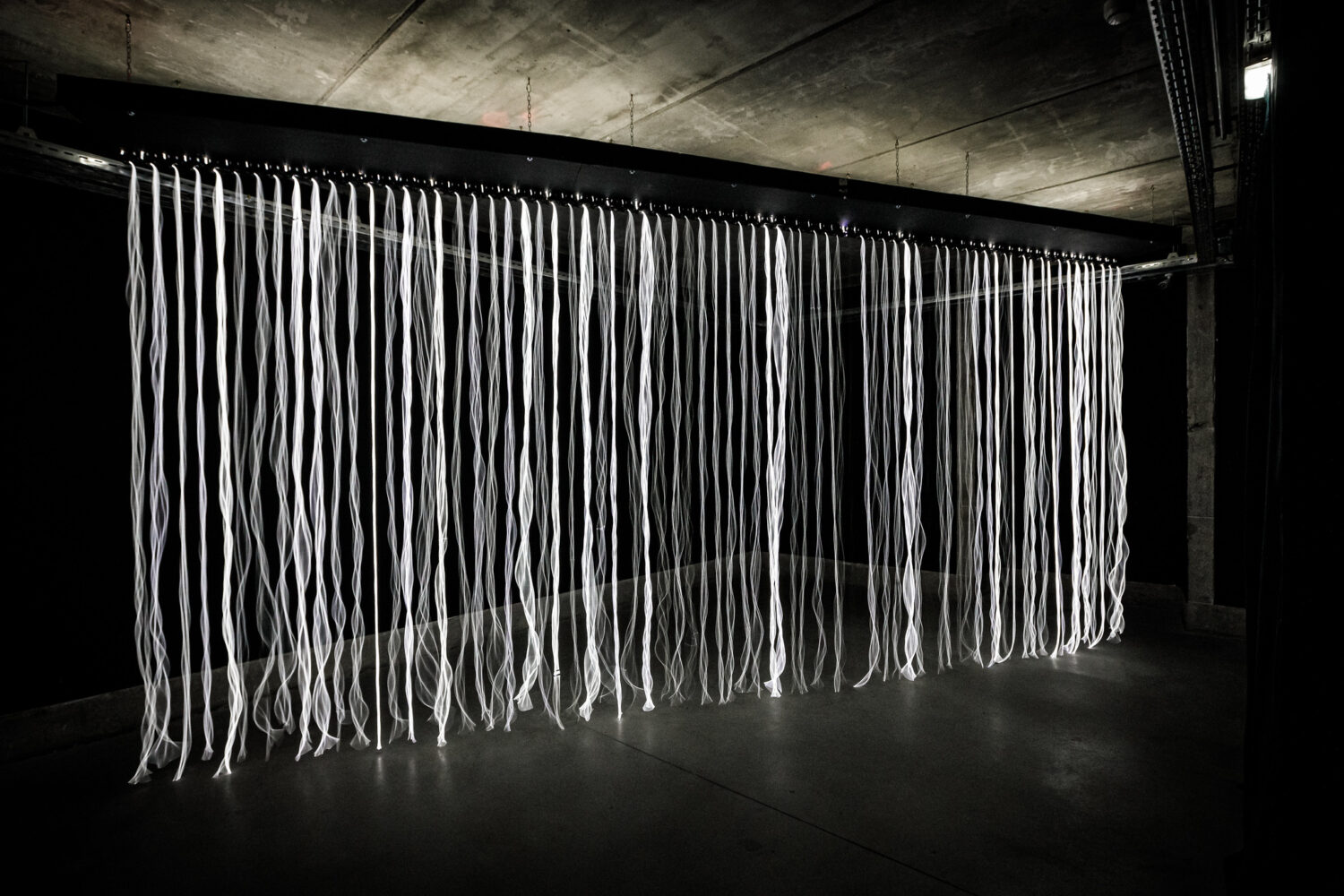
Humans – the measure of all things?
Waterfalls emit infrasound frequencies that are essential for the navigation of certain birds. They use them as a kind of compass during their migrations – which is now threatened by noise pollution caused by industrialization. Cascade is trying to reproduce the infrasound recordings of various waterfalls using small loudspeakers that are unable to transmit low frequencies. This malfunction activates an optical fiber through which the sound “falls”. What is created is a curtain of light that visualizes the sound waves and thus enables an alternative form of hearing. This challenges the human ear and perceptual abilities: such vibrations can be seen, felt and touched with the skin. Experiencing them on your own body creates a real empathy with other species. A deeper connection.
Chapter 3: Ecologies of Action
In the third chapter of the exhibition, visitors will encounter projects that focus on artistic practices with an impact. In this context, the audience also enters the third room of Artist Spotlights and catches a glimpse through the lens of Anab Jain, co-founder of Superflux. She invites us to activate our ability to question things. Even if it seems difficult to come to terms with the discomfort of uncertainty and to be open to multiple ways of seeing the world, she insists on allowing ambiguity and doubt. Her project changes our perception of the world and makes us acutely aware that our opinion is just our opinion – not a fact. This awakens in us the knowledge that things do not have to be the way they have always been. Caution: This is an attempt to ask questions rather than simply find answers.

Fluid borders
To come back to the superpower of artists: Through their efforts to learn to understand our world and the prevailing problems, to develop new perspectives and to initiate a broad discussion about them, artists not only internalize processes of change in individual minds, but also form unusual alliances.
“As we move along the concrete maze, artists stress and stretch both our sensory and our emotional capacities as far as possible. The power and impact of this influence must go beyond mere aesthetics of watching and listening. It should enhance compassion, collaboration and mindful coexistence rooted in solidarity and kinship”, says curator Olga Tykhonova. “As artists translate future uncertainties into present-day choices and we encounter both their tangible and imaginative worlds, we might discover personal and collective power and a sense of connection that is both emotional and political.”
This attitude is reflected in the curatorial framework of the themed exhibition. It also makes the diverse collaborative partnerships and commitments of Ars Electronica visible:
Part of the exhibition, which is presented as part of the European Digital Deal project, is co-financed by the European Union’s Creative Europe program. The European Digital Deal is compelled by the rapid interweaving of the digital world into the fabric of our societies to reflect on what this means for our democracies. The project highlights the risks and opportunities that new technologies bring in order to construct a more conscious technological future. Ars Electronica is currently acting as a residency host for the artist Martyna Marciniak and her project Anatomy of Non-Fact, also part of the themed exhibition.
The exhibition also features works from the EMAP (The European Media Art Platform) residencies, which are supported as part of the European Media Artist in Residence Exchange (EMARE), such as the project Compost as Superfood by EMAP residency artist masharu. Furthermore, the art project Fu(n)ga by Tiziano Derme, Nadine Schütz, which was supported by the ArTS (Art, Technology, Society) Production Grant for Swiss artists, a grant from the Swiss Arts Council Pro Helvetia and a project that was awarded the Ars Electronica Award for Digital Humanity and is supported by the Austrian Federal Ministry for European and International Affairs, will also be exhibited. In addition, Ars Electronica and the National Taiwan Museum of Fine Arts developed a project as part of the TAICCA x Ars Electronica Art Thinking program : the Patching-Ti hoeh koe project by Dimension Plus.
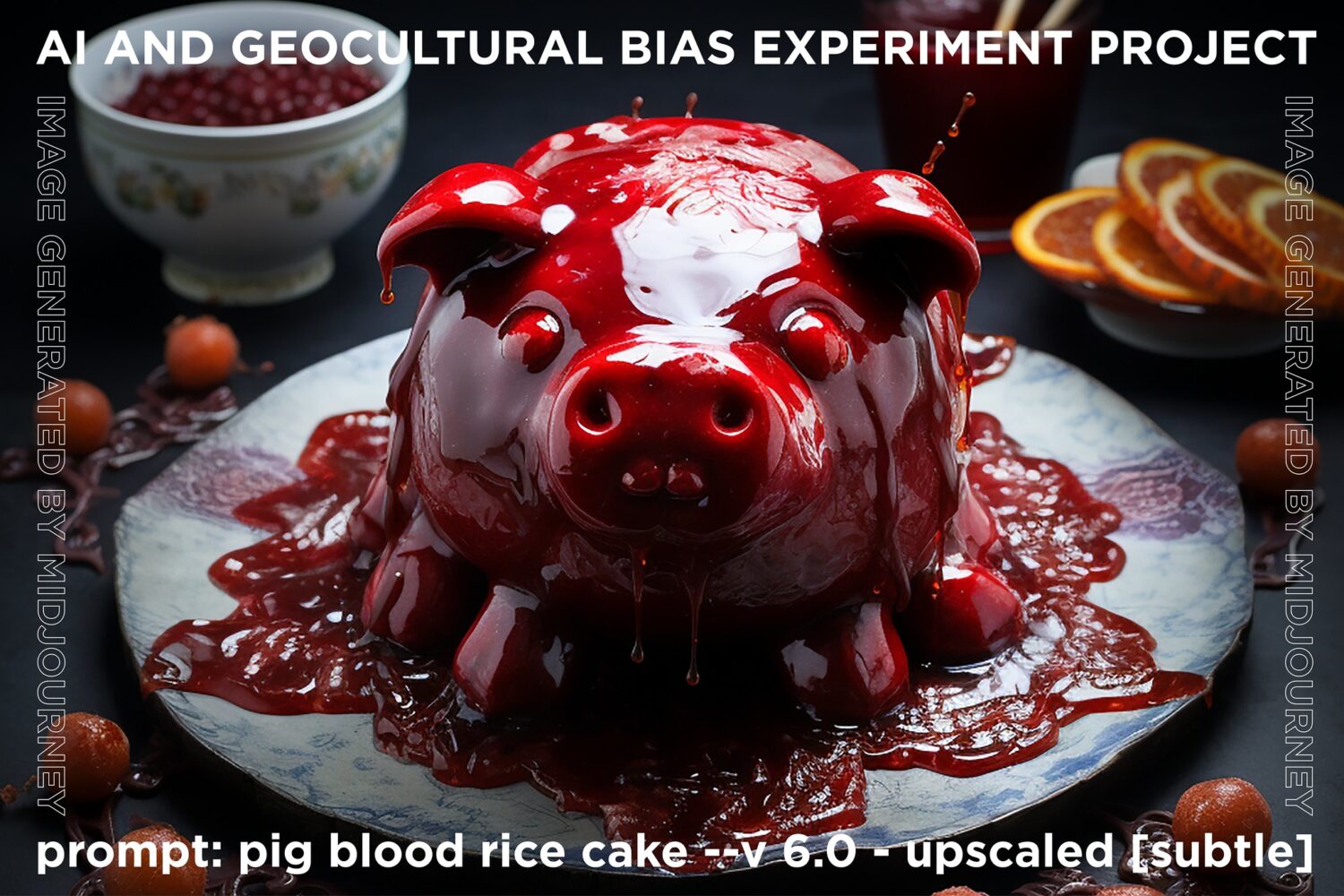
Epilogue
The exploration through architecture, media & methods and the touch of many ends with an epilogue – leading visitors back to the power of stories and storytelling.
Here the audience also enters the final room of Artist Spotlights, where LaJuné McMillian experiments with creating space for new ways of being. She navigates, critiques and bends digital systems and uses them as a mechanism to engage with the limits of technology, particularly in terms of how it can harm, isolate, restrict and ignore the needs of Black people. It shows us clearly that in order to be hopeful without seeming out of touch with reality, we need clarity about the complexity and problems of our world. Only then can collective change become possible through joint efforts.
The entire journey through the POSTCITY bunker illustrates both: the uncertainty of our future and the possibility of taking action now. And yes, it is artists who bring these seeming opposites together through the storytelling of their unusual worlds, giving us an emotional as well as political understanding of community. They are the ones who manage to eliminate ignorance and activate processes of change within us. They are the ones who relentlessly question how we can restructure power dynamics so that we, as users of technology, can not only use the tools available to us, but also contribute to them and shape them. They are the ones who encourage us to choose hope.
The theme exhibition “HOPE: the touch of many” can be visited as part of the Ars Electronia Festival from September 4 to 8 at POSTCITY in Linz. Tickets are available here.
